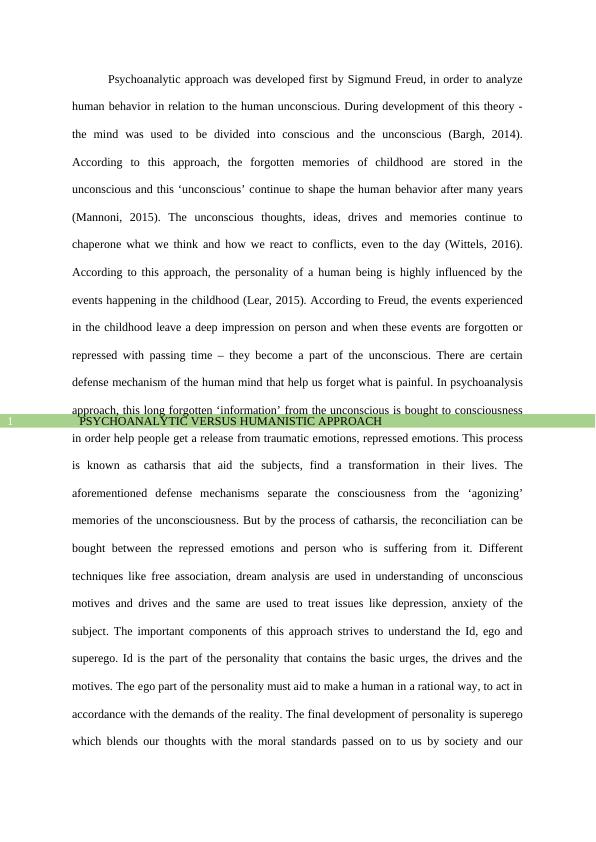Psychoanalytic Versus Humanistic Approach
Added on 2022-12-22
5 Pages1393 Words58 Views
End of preview
Want to access all the pages? Upload your documents or become a member.
Introduction to Psychology: Psychoanalytic Approach and Behavioural Approach
|5
|1384
|267
A Psychoanalytic Interpretation of My Dream
|9
|2269
|225
Personality Theory: A Comparison of Freud and Carl Roger's Theories
|4
|746
|328
Psychoanalytic Therapy: Techniques and Effectiveness
|10
|2955
|172
PSYCHOLOGY Name of the Student: Author's note
|3
|362
|443
Psychology: Approaches, Research Methods, and Ethical Issues
|10
|3216
|294

